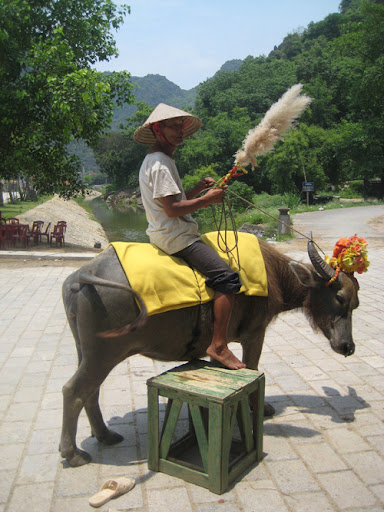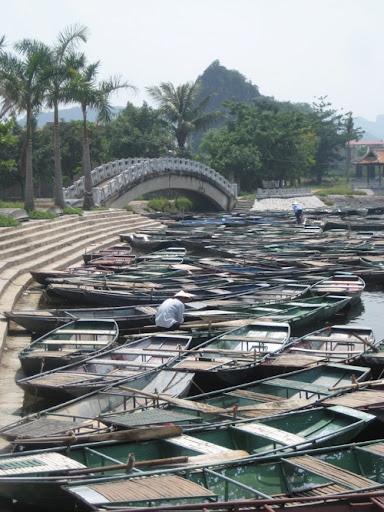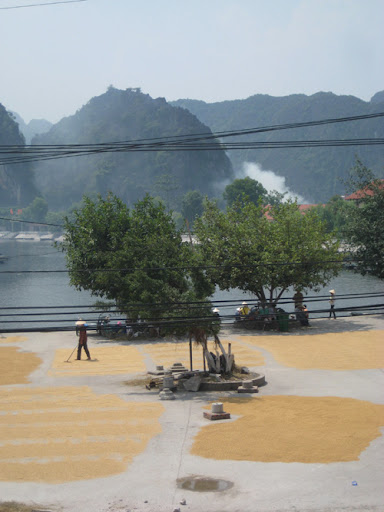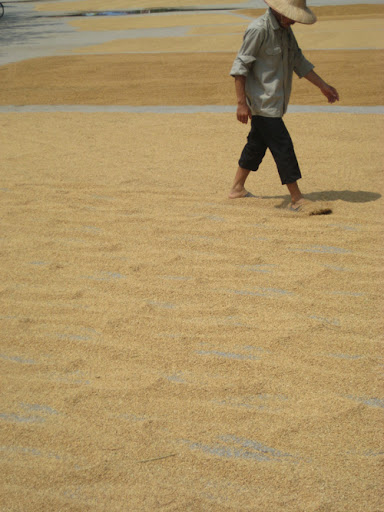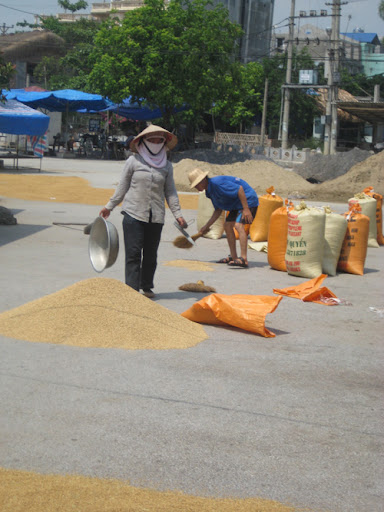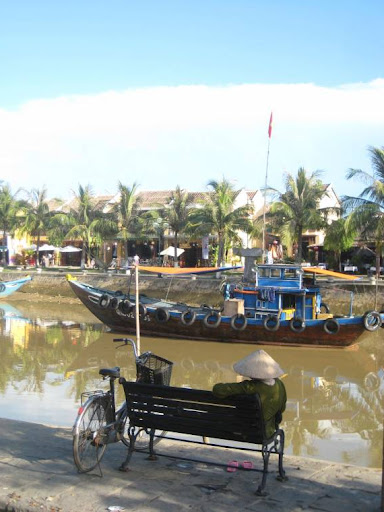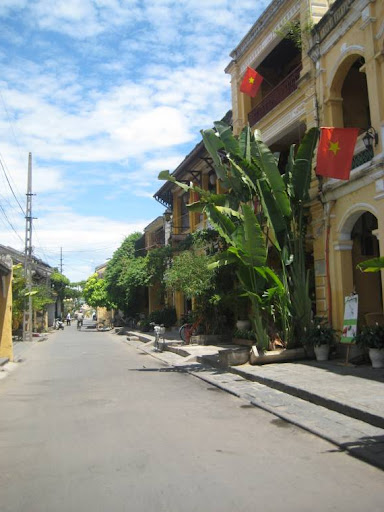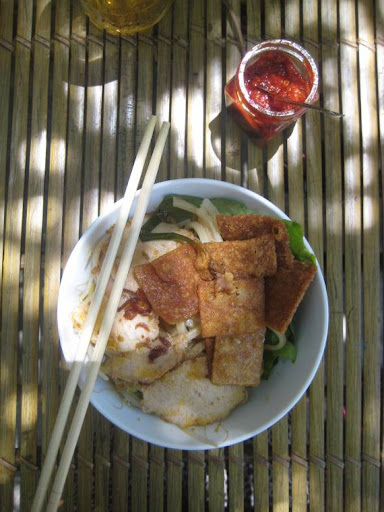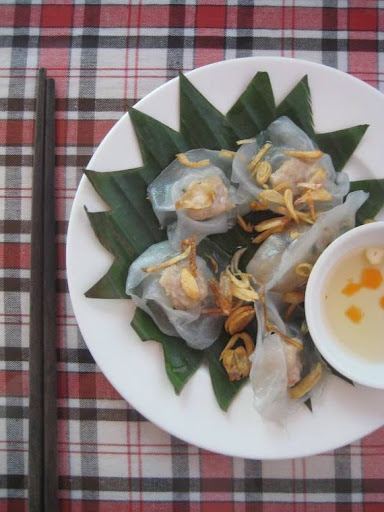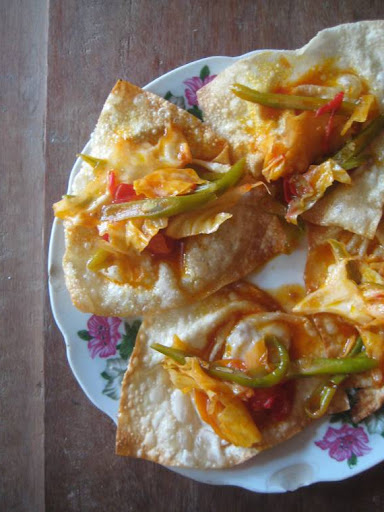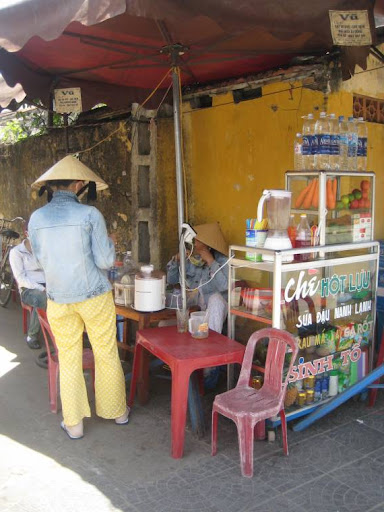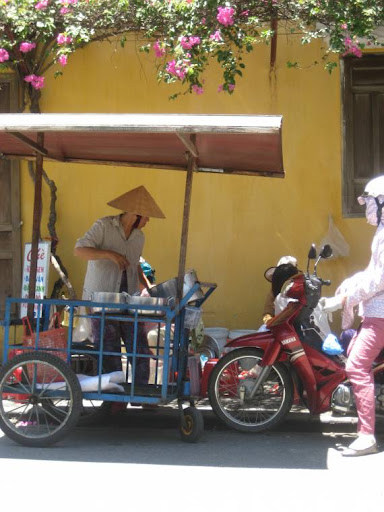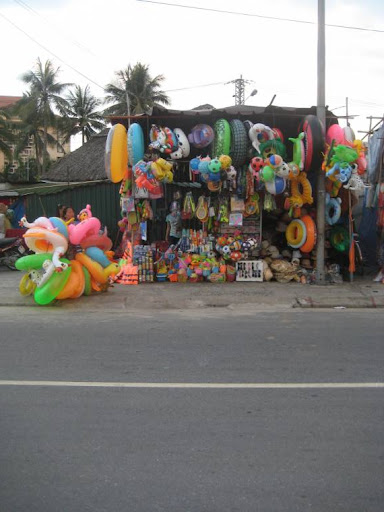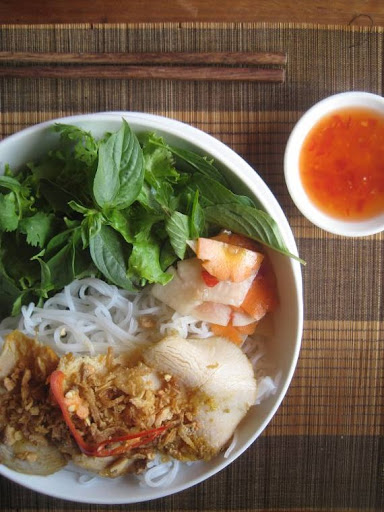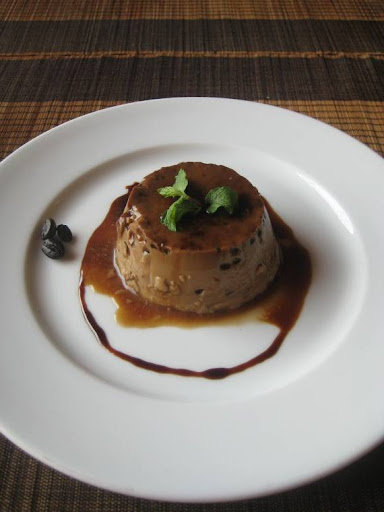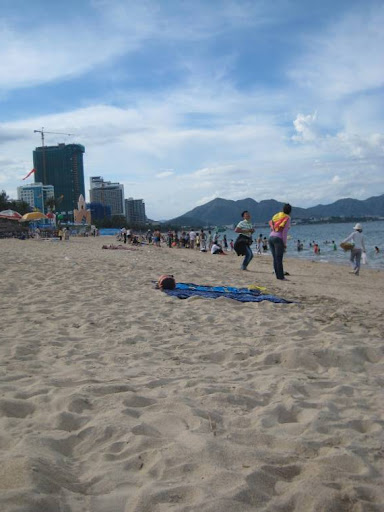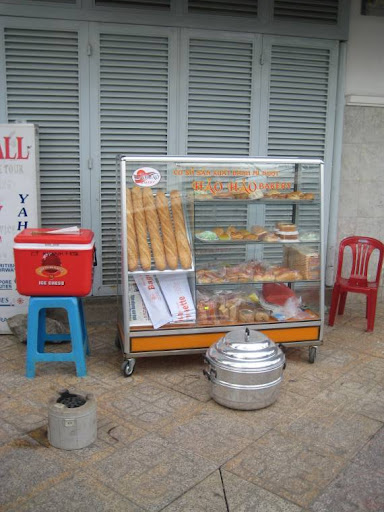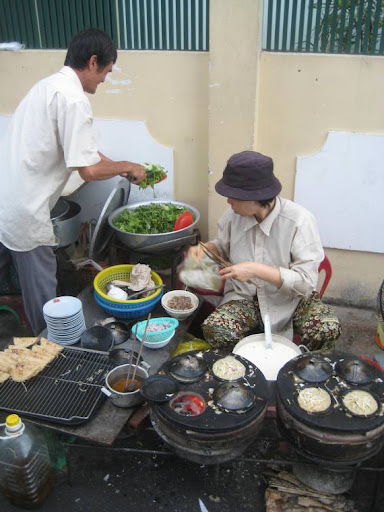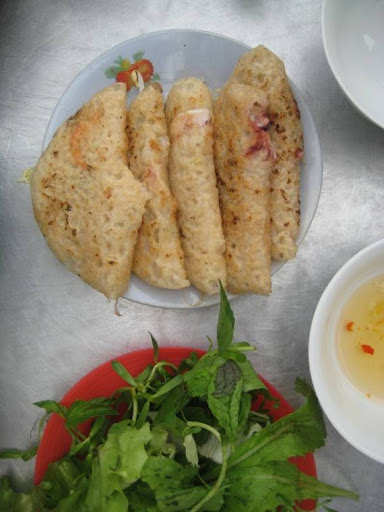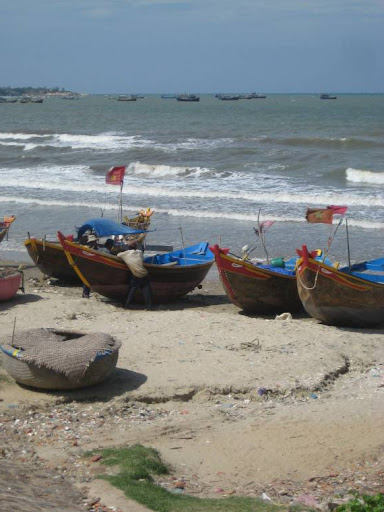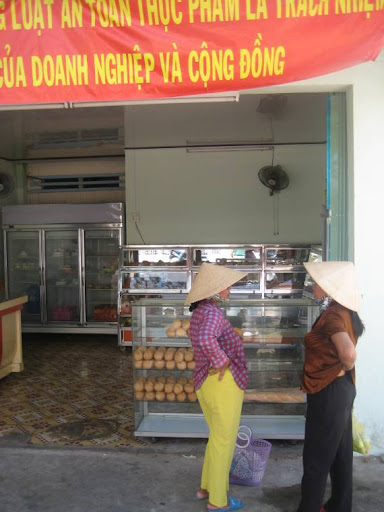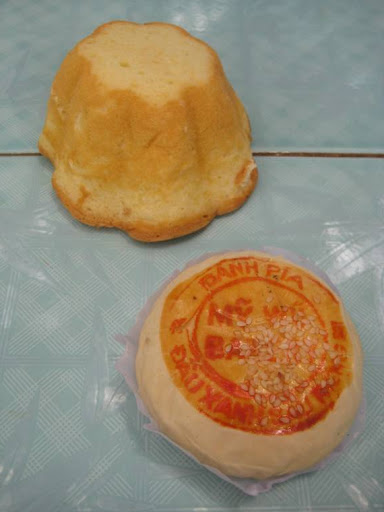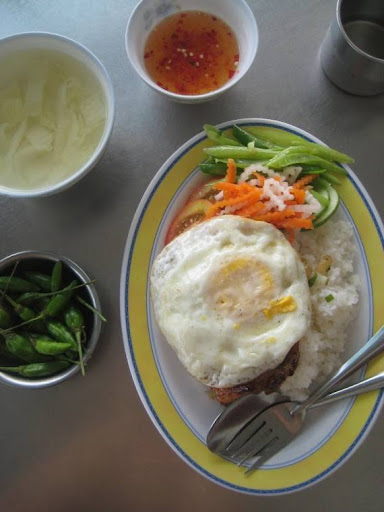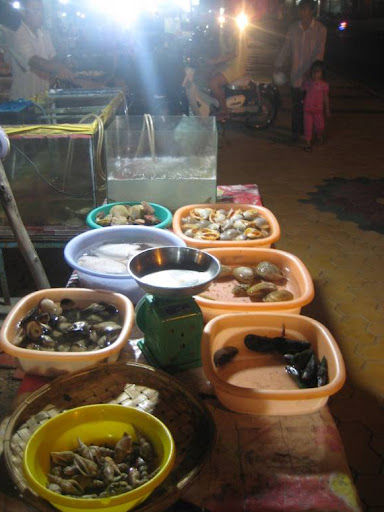
Hanoi or Hà Nội is the capital and second largest city in Vietnam after Ho Chi Minh City though Ho Chi Minh himself found his final resting place in Hanoi. It once was the capital of French Indochina and the influences are still visible whether it'd be in the colonial architecture or in the baguettes sold in bakeries and at street stalls everywhere.
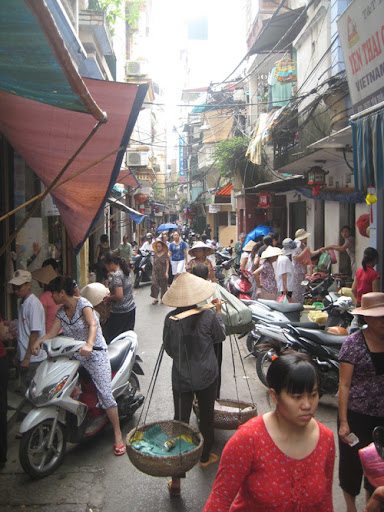
The old town is charmingly busy with street stalls everywhere and even the tiniest corner can be transformed to a kiosk, restaurant or tea house.
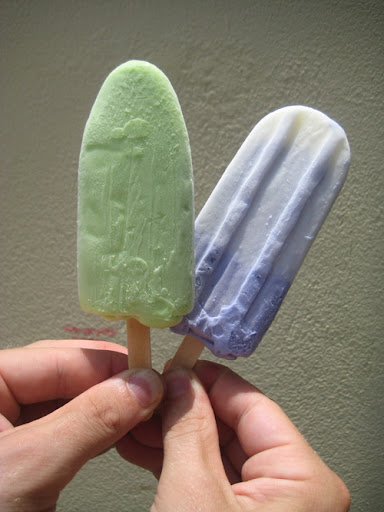
Taro & coconut ice cream and Green sticky rice. Guess which ones which?
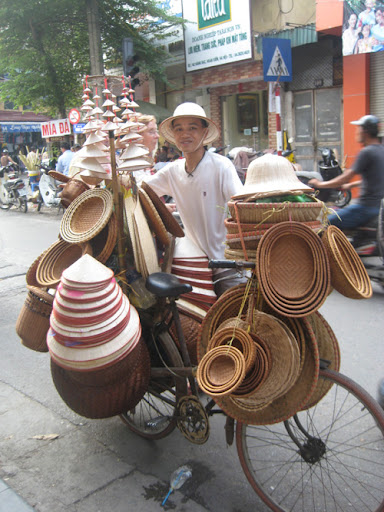
You can see a lot of street vendors selling directly from their bicycles. This one here specialises in baskets and traditional Vietnamese hats.
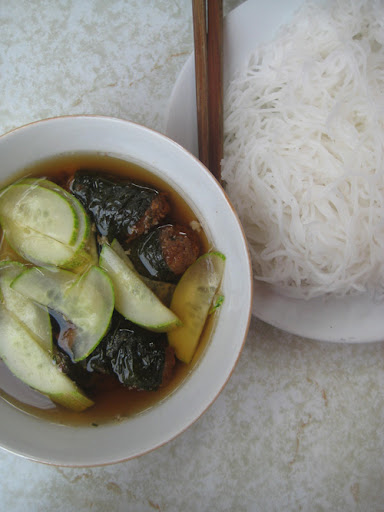
Bun thit nuong but totally different than the version we had in Ho Chi Minh City.

Döner kebap is a Turkish classic gone German and one of Germany's most popular fast food dishes that has obviously made its way to Vietnam. There are also hot dog stands and speaking about hot dogs, that gets a totally different connotation in Hanoi where you can find a whole street dedicated to dog meat. Hot dog. Literally.
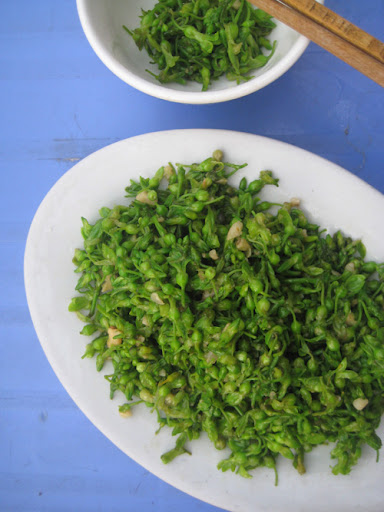
Hoa thien ly are the flower buds of a tree and a Vietnamese speciality similar in taste to jasmin flower buds used in Chinese dishes. It's a delicate slightly nutty flavour and best enjoyed simply fried with garlic or in egg based dishes.
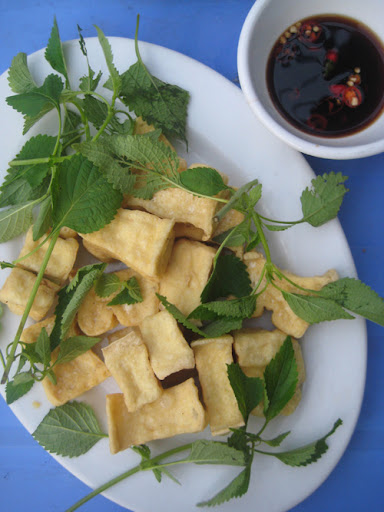
Fried tofu with a chili infused hot hot soy sauce and fresh lemon balm to counterbalance the spicyness. Fresh herbs are an integral part of a lot of dishes and a common Vietnamese phrase translates to "eat herbs when you are healthy, drink herbs when you are sick".
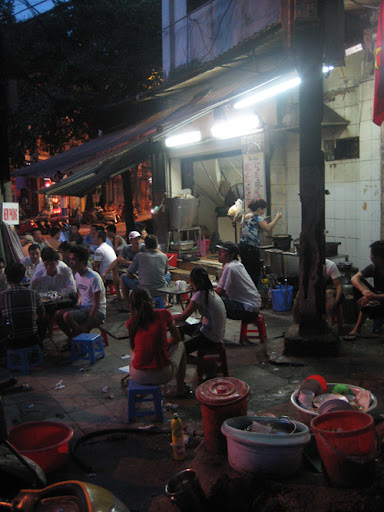
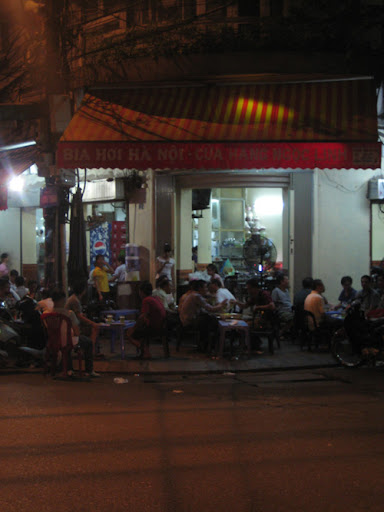

In the evening the pavement is transformed to beer gardens with child size plastic chairs and tables popping up everywhere and you can drink a bia hoi hanoi or five served from kegs situated outside as well. What a way to finish your day.

